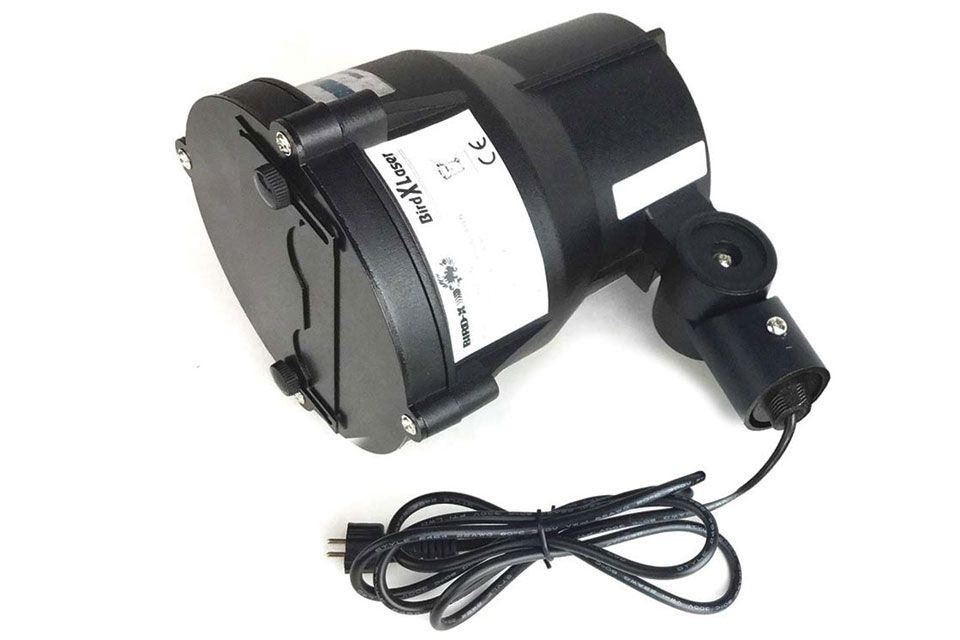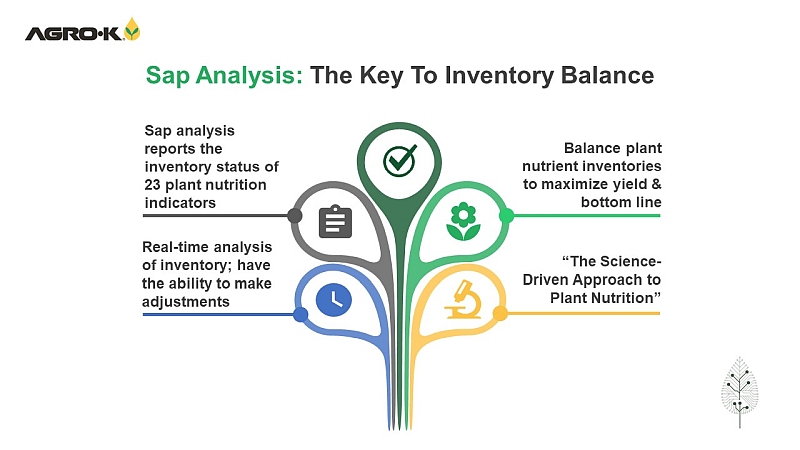High-Tech Solution for Bird Control in Your Orchard

Beams from the Agrilaser Autonomic shine through an orchard. (Photo: Bird Control Group)
“Once the birds have had a taste of the grapes,” says Sven Von Kintzel, “they’re almost impossible to get rid of.”
This was the case, at least, until the business he manages — Devonian Coast Wineries in Nova Scotia, Canada — trialed a new laser technology back in 2015. The Agrilaser Autonomic from Bird Control Group delivered dramatic results: starling and robin numbers plummeted 90% across the 15 acres where the laser was placed.
Based on their positive results, they applied for and received government funding to purchase their own automated laser.
Why a laser?

Cedar waxwings can be problematic.
(Photo: Mike’s Birds)
Unlike scarecrows, plastic falcons, and other low-tech methods like hand-clapping that have been around forever, birds don’t get used to it, Steinar Henskes, Chief Executive Officer of the Netherlands-based Bird Control Group, says.
“The laser beam is approaching their comfort zone, as they perceive it as a physical danger. Birds are down low in the food chain, and they get scared by this beam that is always moving toward them.”
Yet, a laser is not a magic wand. The winery is far from alone in its reliance on many varied tools to repel grape-eating visitors. Von Kintzel says he needs to keep a diverse toolbox in order to maintain bird control. Pressure gets heavy typically in two out of every five years, depending on how harsh the winter was.
“We’ve got seven distress call makers, three propane cannons, 10 kites that look like hawks and eagles, eight windmills with black blades, and flare pistols. It’s quite the toolbox, but birds get used to anything, so we are always on the lookout for new gadgets,” he says.
The bird control industry has mirrored government and consumers moving away from chemical pesticides toward more biological solutions, Henskes explains.
“The industry is much more now into electronic equipment because you are not affecting crops. There’s a similar trend going on in the entire crop protection industry, which we also see in our little niche,” he says, adding: “Growers can lose up to 30% of their crop to birds, so it’s a very clear business case.”
Bird Control Group has about 5,000 users of the Agrilaser technology in North and South America, Europe, and Australia, and Henskes says that’s scratching the surface for a technology that was introduced only two years ago.
Each Agrilaser Autonomic system costs around $10,000, but growers will often opt to rent it for two to three months per year. The laser robot is mounted as high up as possible on a motor platform so it can beam down into the crop and left and right, and is controlled by built-in software configured according to the site. For example, programming the laser to avoid shining onto roads and neighbors’ homes is critical.
‘Bird Brain’ a Misnomer

Simple, cost-effective laser from Bird-X. (Photo: Mike’s Birds)
Bird-X, which has been in the bird control business for 53 years — primarily to government, food packaging, and industrial users — is now applying its expertise in indoor environments to outdoor lasers for agriculture. The Chicago-based company sells simpler, less expensive lasers that do not have software, and works with its long-time partner, Bird Gard, to deliver solutions to the ag market that utilize both lasers and sound-based deterrents such as distress and predator calls together.
“If you don’t match the laser with some sort of other danger call, like a propane cannon, you start to lose effectiveness over time. It really does have to be a holistic approach because of the food sources,” Josh Pierce, Bird-X Sales Manager, says. “Ours is simply a laser that works intermittently and can run off a solar panel or 110-volt electricity or 12-volt battery. It is certainly a lot more user-friendly for the ag market. We’re convinced that mixing a laser or multiple lasers with sound — especially if you have a lot of acreage — is really what’s going to bring growers more success than just trying a piecemeal solution. Any time you’re giving a problem animal all the food they can desire, [removing them] becomes one of the most challenging things you can do.”
Pierce says if Bird-X’s growth in the last decade is any indication, bird problems have worsened.
“There are very few predators for a lot of these species, and there is heavier migration moving farther north each year,” he says.
Physical barriers, including netting, have proven consistent and effective in controlling birds, but for a grower with dozens of acres, installation and removal each season is a challenge.
“I speak with two to three growers a week, and we understand their concerns and frustration with yield loss when it comes to birds. We kind of have to throw the kitchen sink at them. As of now, lasers seem to be the most hopeful,” Pierce says.
The AT-3500 Avian Deterrent Laser System from Armada Technologies is another simple-to-operate laser that has captured growers’ attention of late.
In the Pacific Northwest, key pest birds in apple orchards and vineyards are starlings, sparrows, grackles, blackbirds, and finches. Pierce says issues with woodpeckers looking for bugs on branches in vineyards have also become more common. In the Midwest, crows and robins are among the more problematic birds, while the cedar waxwing is an important pest in cherries and blueberries.
All of those interviewed stressed the importance of being vigilant about managing the products, as opposed to deploying a control method and hoping for the best.
“Even though there’s this term ‘bird brain,’ they figure out pretty fast if it’s the same thing going off all the time or if something is not a threat. We need to adapt in response. If you’re going to use something like (a sound repellent system or laser), you need to make it as surprising and random as possible,” advises Dr. Catherine Lindell, an expert in avian behavior and ecology in managed ecosystems. “We’re not dealing in magic; we’re trying to reroute birds,” Pierce adds. “I would love to have that magical product, but I don’t think that’s coming given wildlife and food sources.”










